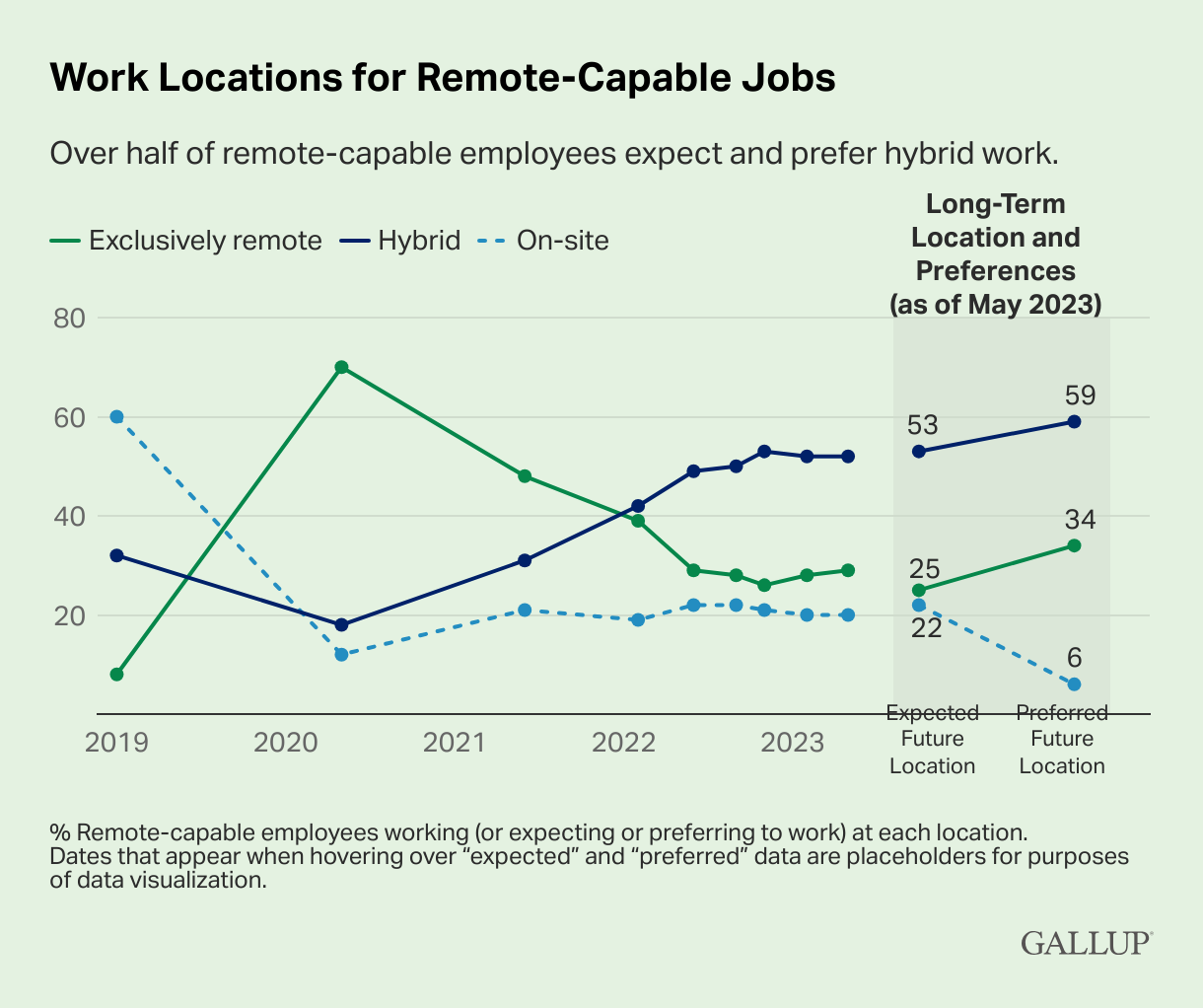PUBLISHED ON SEPTEMBER 5, 2023 | HR ADVICE
As a result, more organizations have shifted to a hybrid work model. According to a recent report by Gallup, 60% of employees used to work on-site in 2019. That figure drastically fell to 20% in 2023. The report reflects that 40% of the employees have shifted from an on-site work model to a hybrid or exclusively remote work model.

What Is the Hybrid Work Model?
Different organizations have varying objectives with their hybrid work models. Some require working every other day or attending fixed days of the week as decided by the employer or the employees.
Today, organizations face the reality that most employees prefer working in a hybrid work model. A survey conducted by PWC found that 55% of employees would choose the new model over on-site settings. It is prevalent among the younger generations and the working women class.
Why Is the Hybrid Work Model Mutually Beneficial?
As a result, the hybrid work model enforces a mix of on-site and remote working arrangements without affecting productivity and efficiency. Some of the significant benefits include the following:
Cost Savings
Subsequently, organizations can utilize these savings and invest them in other opportunities to increase their revenue. They can also enforce new policies to reduce their carbon footprint and implement sustainable practices. It will help them build their brand image and position themselves for long-term financial resilience and adaptability in an ever-changing business landscape.
On the other hand, employees can benefit from saving time and money from commuting. Most employees are unable to live near their job locations. As a result, it can help them retain energy and motivation to do well at work that would otherwise be wasted commuting from their home.
Promote Equality, Diversity, and Inclusion
Moreover, it will force organizations to track employee progress with definite performance metrics. Hence, they cannot act biased according to their behavior or physical appearance.
Additionally, the hybrid work model is highly preferred by women due to their family responsibilities. Hence, they can cater to childcare needs without having to commute to the office on certain days and respond to emergencies accordingly.
Increased Productivity
As a result, hybrid work models provide flexibility and empower employees to become more efficient at their own pace. They can retain their energy and produce better quality results without commuting time. They can also utilize the time to work according to their strengths when they're at their optimal best.
Many studies have shown that remote and hybrid work has increased productivity. It helps prevent burnout and not waste the entire day in the office for a single meeting.
Fostering Mental Health
Working from home allows employees to allocate time for their family, friends, and personal goals. It empowers them to mold work around their lifestyles and not vice versa. Hence, it leads to a happier workforce that increases talent retention for organizations. It also motivates employees to deliver top-notch work and use their talents best.
Enforcing Better Communication
Most organizations already use various communication tools to keep in touch with employees in multiple departments. Hence, hybrid work models offer a flexible and balanced environment for organizations to optimize productivity by minimizing distractions. Various studies have shown that people can also create essential connections through virtual and digital experiences.
High Employee Satisfaction
As a result, hybrid work models allow them to work according to their preferences. Moreover, a recent study showed that hybrid workers took fewer holidays and sick days. The model's flexibility allowed them to become efficient with their daily responsibilities without spending time working from the office.
Moreover, a thriving work culture is critical in hiring new talents, increasing retention rates, and creating a healthy work environment. Therefore, adopting a hybrid work model in the increasingly competitive landscape is a good move for any organization.
Conclusion


